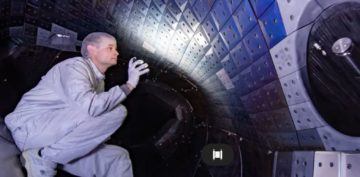 Kahled Talaat in Tablet (photo by Stefan Sauer/Picture Alliance via Getty Images)
Kahled Talaat in Tablet (photo by Stefan Sauer/Picture Alliance via Getty Images)
The 21st century may one day be known more than anything else for the period when human beings transitioned from fossil fuels to clean renewable energy. Such a transition, as we know even now, is crucial to sustaining our physical environment and to supporting the growth of human civilization.
Debates have been raging around the role that nuclear fusion might play in this transition. Last February, the JET reactor in the United Kingdom broke the record for the amount of energy produced per pulse; last year, the experimental advanced superconducting tokamak (EAST) in China broke the record for highest plasma temperature achieved in a tokamak. Such developments stir up enormous excitement about a potential epoch-making breakthrough in fusion technology. Media reports and press releases on individual developments in fusion, however, often fail to provide a bird’s eye view of the field, exaggerating progress or selling fusion as a magical, “unlimited” source of energy not bound by the engineering or economic limitations of other forms of energy.
The truth is there are multiple approaches to fusion simultaneously being pursued, and they all have advantages and disadvantages. To get a more accurate idea of where we are in a technological field so crucial to the future of humanity, it helps to review some of the scientific and economic fundamentals at play before making any predictions about the future.
More here.
